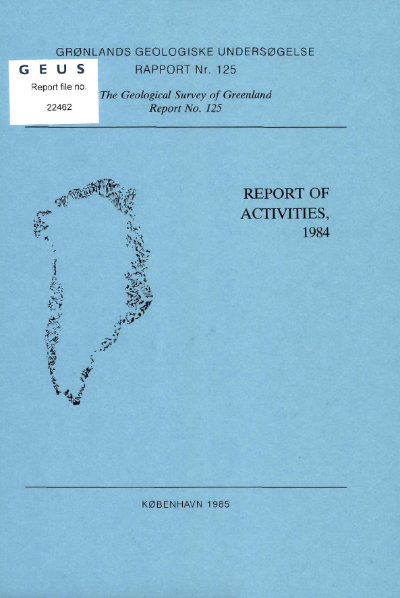Uranium exploration in the Qagssiarssuk area, South Greenland
DOI:
https://doi.org/10.34194/rapggu.v125.7896Abstract
FolIowing the promising results of the Syduran project (Armour-Brown et al., 1984) a spin-off project Sydex was initiated in April 1984. The project is financed under the Ministry of Energy's Research Programmes 1984 and field work was carried out in several areas in South Greenland this summer (Armour-Brown & Wallin, this report). This contribution describes the work in the Qagssiarssuk area (fig. 20). In connection with the prospecting a geophysical survey was also carried out (Thorning & Boserup, this report). The main objects of the field work were to prospect the granite and sandstone area west of Qagssiarssuk between Tunugdliarfik and Nordre Sermilik (fig. 25) by ground scintillometry and water sampling. The major fauIt zones and adjacent areas together with the sandstonel granite unconformity were investigated especiaIly. Water samples from both lakes and streams were collected to test the usefulness of the method in this very poorly exposed area. Pitchblende and other uranium mineral occurrences have previously been found in major fault zones in the western part of the area (fig. 25) (Armour-Brown et al., 1983). Radioactive thorium-dominated dykes have also been found (Hansen, 1968; Armour-Brown et al., 1982). Stream-water and sediment samples with anomalously high uranium are located within the prospected area (Armour-Brown et al., 1982).
Downloads
Published
Issue
Section
License
This article is distributed under a CC-BY 4.0 licence, permitting free redistribution and reproduction for any purpose, even commercial, provided proper citation of the original work. Author(s) retain copyright over the article contents.


